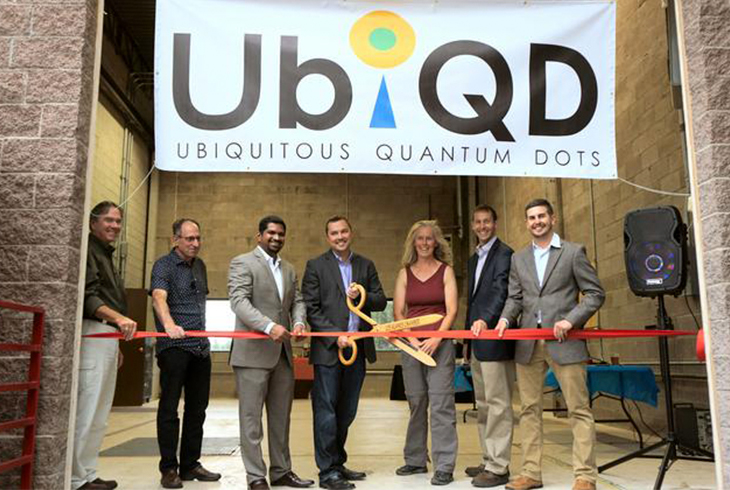UbiQD LLC, a quantum dot company, says it can turn windows into solar generators.
"There's an opportunity to generate electricity and power buildings with their windows," said company founder and President Hunter McDaniel.
Instead of putting a giant solar panel in front of a window, effectively blocking out all light, he says, you can tint windows with quantum dots, a type of nanotechnology that can transform light. Quantum dots take in light and then re-emit it in a different form. The dots in the window tint would take in sunlight and then re-emit it in a way that traps the light inside the window glass. A solar cell, which can collect the trapped light, is placed at the edge of the window, where it absorbs the transformed light and uses it to generate electricity.
There are two big pieces of technology involved with this idea. The first is the quantum dots themselves. There are a number of them on the market, says McDaniel, and they're used in a lot of different ways, but especially in TVs and other electronic displays.
The dots used at UbiQD are different from the vast majority of dots on the market, he says, because concerns have been raised about toxicity of some quantum dots. Some forms of the nanotechnology have limited applications due to the danger they can pose when handled incorrectly. He says his company's product is safe to use in things like windows that people come into contact with on a daily basis.
The quantum dots used by UbiQD were developed through research at Los Alamos National Laboratory. McDaniel says UbiQD licenses the intellectual property rights for the nanotechnology from the lab and the Massachusetts Institute of Technology. He says UbiQD, which employs four people, has filed its own patents, but also uses the ones from the lab.
The other piece of tech integral to a solar window application of quantum dots also comes from Los Alamos National Laboratory. McDaniel says UbiQD has access to a patent to use quantum dots in safety glass, like the kind used in windshields, to produce solar energy, but the research around using the tech on glass windows was done at Los Alamos National Laboratory. On July 28, the group received an extended license to use that application research.
"That was a long road," McDaniel said of the licensing process. "It took us about six months to negotiate that."
And on July 29, the group won a year-long, $225,000 grant from the National Science Foundation to pursue using quantum dot tints on glass windows to create solar energy.
McDaniel says the company is planning on using the money to continue research and build prototypes of working solar windows. If the next year goes well, he says, the company could be eligible for over a million dollars in grant money from the foundation. The current grant is for research and development, but if the company can prove its product works, it could receive more money from the foundation to scale and sell its work.
He says he envisions a future where both cars and buildings can generate solar power by adding a quantum dot tint to the windows. Eventually, he would like to partner with a manufacturer who creates the windows while his company provides the quantum dots and the method of production.
While the solar windows aren't ready for prime time yet, McDaniel says the company currently sells its nanotechnology in a powder form to private, government and academic researchers. Last year, he says it generated about $20,000 in sales and he expects to generate about $50,000 by the end of this year. He says the company has also received about $700,000 from investors and $400,000 in grants, and he hopes to raise $3 million during the next round of investment.
UbiQD had a ribbon cutting ceremony July 29 for its new 9,000-square-foot facility, where McDaniel hopes to scale up its raw manufacturing and increase its ability to make larger prototypes.
"We're committed to staying here in Los Alamos," he said.
This article originally appeared in Albuquerque Business First






